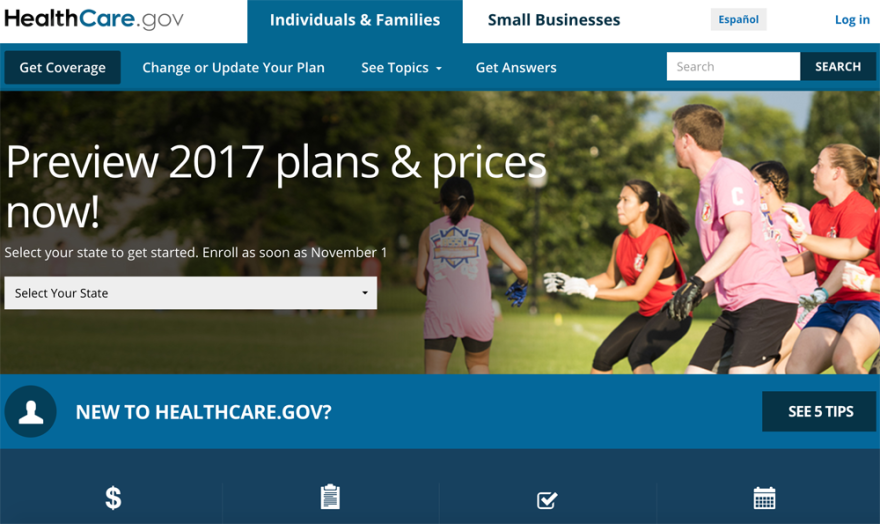Kansas families who buy health insurance through the online marketplace for 2017 could pay $20,000 or more if they have serious medical problems, according to federal data.
Most families likely won’t pay that much because they qualify for subsidies, but the information shows that even low-premium plans can become costly.
Heartland Health Monitor used data from healthcare.gov to calculate the total costs for a family of four with two 40-year-old adults and two children in seven Kansas counties. Premiums would be different for other families based on age, number of family members and geography. Information isn’t available yet on plans offered by Medica, the newest insurer on the exchange in Kansas.
Marketplace plans are placed in “metal” categories — bronze, silver, gold or platinum — based on cost.
If the family lived in Johnson County and didn’t qualify for subsidies, monthly premiums would range from $656 for the cheapest bronze plan to $1,339 for the most expensive gold plan. Over the course of a year, the lowest-cost plan could save the family almost $8,200 in premiums — assuming the family rarely needed to use its insurance.
The cheapest plan has a $12,000 deductible for medical services, however, so the family could be left paying most of the cost of a hospitalization. It also has a separate $1,200 deductible for prescription drugs, bringing the family’s potential spending on premiums and out-of-pocket costs to $21,072 if any members have extensive medical needs.
For the highest-premium gold plan, the family would pay $16,068 before using any services — a significant upfront investment — and up to $4,000 out-of-pocket on medical treatment and prescriptions. Platinum plans aren’t available in Johnson County.
Splitting the difference between the two extremes also wouldn’t do much for this family if a medical crisis occurred. Only one of the gold plans in Johnson County would require less than $20,000 in premiums, deductibles and other out-of-pocket costs.
Results were slightly better for some other Kansas counties. Families in Shawnee, Sedgwick and Crawford counties could choose among 10 plans that might keep their costs below $20,000, and those in Riley County had nine choices. Finney County residents had eight and Ellis County residents had four.
In some cases, families would benefit by paying high premiums if a member developed a serious medical condition, because they wouldn’t pay much of a deductible. If all family members stayed healthy, however, the lower-premium plans were cheaper, even if they didn’t offer much coverage.
A family of four qualifies for subsidies if its annual income is $33,534 to $97,200. Some qualifying families also could have their deductibles and other out-of-pocket expenses lowered if they choose a silver plan.
The U.S. Department of Health and Human Services estimated most individual marketplace shoppers could find a plan for less than $75 per month, though officials didn’t specify how much those customers might pay in other costs.
Wealthier families still could buy coverage through the marketplace but wouldn’t receive assistance paying for their premiums.
Lower-income families aren’t eligible for subsidies, because the marketplace was created with the assumption that states would expand Medicaid to cover households with incomes up to 138 percent of the poverty line. Kansas hasn’t done so, leaving families earning more than 38 percent of the poverty line in a “coverage gap.”
Meg Wingerter is a reporter for KHI News Service in Topeka, a partner in the Heartland Health Monitor team. You can reach her on Twitter @meganhartMC






